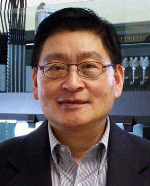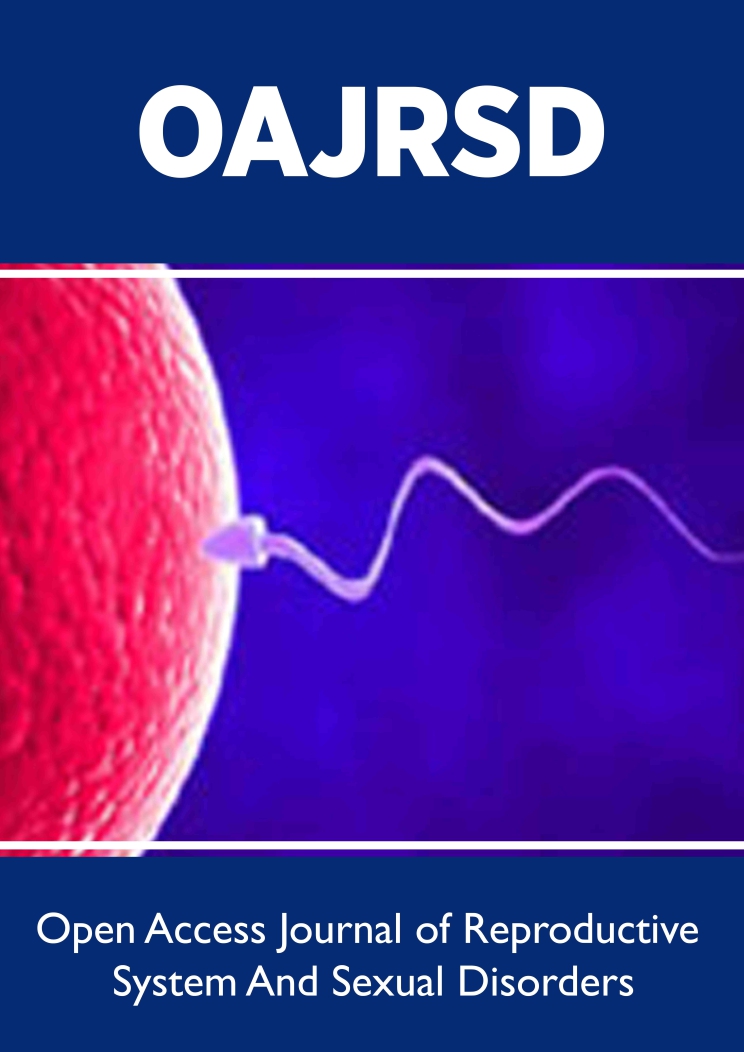
Lupine Publishers Group
Lupine Publishers
Menu
ISSN: 2641-1644
Mini ReviewOpen Access
Disorders of Sex Development Volume 2 - Issue 5
Pedro Acién*
- Department of Gynecology, Miguel Hernández University, Spain
Received:August 17, 2020; Published: August 27, 2020
Corresponding author:Pedro Acién, Department of Gynecology, Miguel Hernández University, San Juan Campus, 03550 San Juan, Alicante, Spain.
DOI: 10.32474/OAJRSD.2020.02.000150
Introduction
Disorders of sex development (DSDs) were defined as “congenital conditions within which the development of chromosomal, gonadal and anatomic sex is atypical” at the Chicago Consensus Meeting in 2005 and then published as a Consensus Statement in 2006 [1-3]. However, there have been and there are many controversies, both because of the negative connotations perceived by organizations and professionals when using terms such as “disorders” (perhaps because of the perceived implications that “sex” involves sexual behavior), or because some health professionals have considered certain terms such as “intersex”, “pseudo hermaphroditism”, “hermaphroditism”, “sex reversal”, etc. inaccurate, non-descriptive, and confusing, or because among families and patient support groups they were felt to be pejorative. Other authors [4,5]. prefer the term “differences” and use the same acronym DSD (differences of sex development). However, many authors and ourselves do not consider the nomenclature proposed in the Chicago consensus as the most appropriate. We believe that it is preferable to first analyze the normal or physiological sex determination and the post gonadal sex differentiation, and then expose their anomalies as they would be included in a pathophysiological and clinical classification of these Anomalies in the Sex Development (ASDs).The development of a human embryo as a man or a womanis among the most defining events in the life of an individual [6,7]. The phenotypic sex of an individual depends on the type of gonad that develops in the embryo, a process that is itself determined by the constitution or genetic inheritance of the individual. But the development of the gonads is different from any other organ, as they have the potential to differentiate into two functionally distinct organs, testes, or ovaries. Indeed, the elements that determine the sex of an individual depend: 1) on their chromosomal endowment (chromosomal sex); 2) on the presence or absence of those chromosomes of gonadal determining genes (SRY and others sex-determining-SD-genes) (genetic sex), and also on the normal functioning of other autosomal genes and regulatory substances of the Hypothalamic-Hypophysis-Gonad (HHG) axis (SOX9, NR5A1/SF-1); 3) on the gonad that is being formed in the gonadal ridge (GR) (testis or ovary, gonadal sex); 4) on the formation of internal genitalia dependent on its gonadal secretions (gonophoric sex); 5) on the formation of external genitalia (also dependent on gonadal secretions, testosterone -T-, and the presence of certain enzymes, 5α-reductase to form dihydrotestosterone -DHT-), and on secondary sexual characteristics (phenotypic sex); and 6) on legal, educational, psychological and psychosocial sex. Furthermore, the person’s sexual identity includes all behaviors with sexual overtones, such as characteristic gestures and habits, ways of speaking, preferences about leisure and the content of dreams. Indeed, hormonal influences not only affect internal and external genital development and differentiation; the embryo’s brain has also been shown to differentiate sexually [8-10]. perhaps through control mechanisms similar to those developed by the external genitalia [11]. On the other hand, it is also possible that the induction of the CNS by hormones affects the patterns of hormonal secretion and consequently sexual behavior in adults [12-16]. So, the individual’s sex and sexual expression, homo or heterosexual, must be considered as the result of all the influences that the individual receives, before and after birth. Swaab [17] pointed out that during the intrauterine period the human brain develops in the male direction through the direct action of the child’s own testosterone, and in the female direction through the absence of this hormone in the girl. At this time, gender identity (feeling male or female), sexual orientation and other behaviors are programmed. As sex differentiation of the genitalia takes place in the first 2 months of pregnancy, and sex differentiation of the brain begins during the second half of pregnancy, these two processes can be influenced independently of each other, resulting in possible transsexuality. This also means that in the case of an ambiguous gender at birth, the degree of masculinization of the genitalia may not reflect the same degree of masculinization of the brain, having been found differences in brain structures and brain functions that are related to sexual orientation and gender [17]. Shi et al [18] have also concluded that brain size dimorphism in certain primates, including humans, is likely regulated by estrogens through genes that exert sex-dependent suppression of brain size during development. And if to all of the above we add that in certain fish, turtles and plants the effects of temperature (temperaturedependent sex determination) have been demonstrated with differently expressed genes according to it [19-22], or the effects of climate change with environmental determination of sex using theoretical models [23], we can imagine the complexity of the topic we are dealing with. As noted above, sex development could be divided into two distinct processes: 1) sex determination, which is the fate of the undifferentiated gonad to form the testis or ovary, a process that is critically programmed genetically; and 2) sex differentiation, which occurs through hormones produced by the gonads in formation and once they are formed. Disruption of any of the genes involved in these processes towards testicular or ovarian development could lead to disorders of sex development [6,7]. Since the origin of abnormal sex development situations must be: 1) Well in the chromosomes and SRY gene (and other SD located in autosomes) that they can carry, and therefore, in the formation of the gonad; Or 2) In the hormone-producing glands involved in sex development (gonads, adrenals, pituitary), as well as in the metabolization of these hormones, in their action on the target organs, and in the content of receptors, the first classification that we could do of these anomalies (or disorders) in the Sex Development (ASDs) would be:
• Due to abnormalities in the determination: of the
chromosomes and/or formation of the gonads.
• Due to abnormalities in the differentiation of the genitalia
and phenotype, which will be due to abnormalities in hormonal
secretions or their action on the target organs, without
abnormalities in the chromosomes or in the gonads (at least
from the histological architecture [24] point of view).
Therefore, considering the above, we suggest classifying situations of abnormal sex development or disorders of sex development (DSDs) as follows:
1. Anomalies in the Sex Determination (chromosomal and/ or gonadal). And it also seems more adequate to separate them into: with or without sex ambiguity (generally):
A. Unambiguous sex abnormalities include gonadal
dysgenesis and variants, sex reversal, Klinefelter syndrome,
and other conditions of infertility related to oligo-azoospermia
in males or primary ovarian insufficiency in females.
B. Anomalies with sex ambiguity (generally) would include XY testicular dysgenesis (which in turn should include
dysgenetic male pseudohermaphroditism -Ps- or partial
gonadal dysgenesis and mixed gonadal dysgenesis) as well as
true hermaphroditism (or ovotesticular disorders, OT-DSD)
and some mutations in the NR5A1 gene/SF-1.
2. Anomalies in the Sex Differentiation (postgonadal), that is, without chromosomal or gonadal abnormalities (histological), frequently present sex ambiguity or Ps to different degrees, and they should include:
A. Male Ps, or Male (XY) with Androgen Deficiency (MAD), if
the karyotype is XY and there are testes, even if the phenotype
is female. And this can occur due to enzyme deficiencies
or defects in the androgenic action (including Leydig cell
hypoplasia). But also, as mild or unambiguous sex forms, it
would include cryptorchidism, hypospadias, and lack of AMH
(persistent Müllerian duct syndrome).
B. Female Ps, or Female (XX) with Androgen Excess (FAE), if
the karyotype is XX and there are ovaries, even if the phenotype
is male. It mainly includes congenital adrenal hyperplasia
(CAH) and iatrogenic and tumor causes. And,
C. Other anomalies of sex differentiation without
Ps or ambiguity may be due to idiopathic or congenital
hypogonadotropic hypogonadism (CHH) in both male and
female, and here we include Kallmann syndrome.
Finally, it should be noted that anomalies in sex differentiation caused by alterations in gonadal hormonal secretions (including those due to hypothalamic-pituitary abnormality) or their effects on target organs and phenotype, are those that should be included among the DSDs (or ASDs), and which are generally also due to abnormalities of genes responsible for enzymes and steroidogenesis (e.g. the NR5A1 gene is a key transcriptional regulator gene in the HHG axis). However, DSDs (or ASDs) should not include genitourinary malformations (urogenital anomalies) resulting from abnormalities in the structural anatomical formation during embryonic development of the mesonephric (Wolffian ducts) and paramesonephric (Müllerian ducts) genital ducts in both sexes, including the urinary system [25-28].
Acknowledgments
To NoemíAcién for the English revision of this manuscript
References
- LeePA, HoukCP, AhmedSF, HughesIA (2006) In collaboration with the participants in the International Consensus Conference on Intersex organized by the Lawson Wilkins Pediatric Endocrine Society and the European Society for Paediatric Endocrinology. Consensus Statement on Management of Intersex Disorders. Pediatrics p. 118(2):e488-e500.
- HoukCP, HughesIA, AhmedSF, LeePA (2006) and Writing Committee for the International Intersex Consensus Conference Participants. Summary of Consensus Statement on Intersex Disorders and Their Management. Pediatrics 118(2): 753-757.
- HughesIA, HoukC, AhmedSF, LeePA (2006) Consensus statement on management of intersex disorders. J PediatrUrol 2(3):148-162.
- CoolsM, NordenströmA, RobevaR, HallJ, WesterveldP, et al. (2018) COST Action BM1303 working group 1Caring for Individuals With a Difference of Sex Development (DSD): A Consensus Statement. Nat Rev Endocrinol 14:415-429.
- CamatsN, FlückCE, AudíL (2020) Oligogenic Origin of Differences of Sex Development in Humans. Int J MolScip. 21(5).
- EidW, Biason-LauberA. (2016) Why boys will be boys and girls will be girls: Human sex development and its defects. Embryo Today 108(4):365-379.
- Biason-LauberA (2016) The Battle of the Sexes: Human Sex Development and Its Disorders. Results Probl Cell Differ pp. 337-382.
- McEwenBS, (1983) Gonadal steroid influences on brain development and sexual differentiation. Int Rev Physiol27:99-145.
- PeperJS, KoolschijnPC (2012) Sex steroids and the organization of the human brain.J Neurosci32(20):6745-6.
- LombardoMV, AshwinE, AuyeungB, ChakrabartiB, TaylorK, et al. (2012) Fetal testosterone influences sexually dimorphic gray matter in the human brain. Version 2. J Neurosci32(2):674-680.
- Negri-CesiP, ColciagoA, CelottiF, MottaM (2004) Sexual differentiation of the brain: role of testosterone and its active metabolites. J Endocrinol Invest 27(6):120-127.
- KiesowH, DunbarRIM, KableJW, KalenscherT, VogeleyK, et al. (2020) 10,000 social brains: Sex differentiation in human brain anatomy. 6(12).
- RistoriJ, CocchettiC, RomaniA, MazzoliF, VignozziL, et al. (2020) Brain Sex Differences Related to Gender Identity Development: Genes or Hormones?.Int J Mol Sci21(6).
- CisternasCD, CortesLR, GolynkerI, Castillo-RuizA, ForgerNG (2020) Neonatal Inhibition of DNA Methylation Disrupts Testosterone-Dependent Masculinization of Neurochemical Phenotype. Endocrinology 161(1).
- JoelD, Garcia-FalguerasA, SwaabD (2020) The Complex Relationships between Sex and the Brain. Neuroscientist 26(2).
- ArnoldAP (2020) Sexual differentiation of brain and other tissues: Five questions for the next 50 years. Hormones and Behavior 120:104691.
- SwaabDF(2007) Sexual differentiation of the brain and behavior. Best Pract Res ClinEndocrinolMetab21(3):431-444.
- ShiL, LinQ, SuB (2015) Estrogen regulation of microcephaly genes and evolution of brain sexual dimorphism in primates. BMC EvolBiol15:127.
- XiongL, YangM, ZhengK, WangZ, GuS, (2020) Comparison of Adult Testis and Ovary MicroRNA Expression Profiles in Reeves' Pond Turtles (Mauremysreevesii) With Temperature-Dependent Sex Determination. Front Genet 11:133.
- DongJ, XiongL, DingH, JiangH, ZanJ, et al. (2020) Characterization of deoxyribonucleic methylation and transcript abundance of sex-related genes during temperature-dependent sex determination in Mauremysreevesii. BiolReprod102(1):27-37.
- XiongY, WangS, GuiJF, MeiJ (2020) Artificially induced sex-reversal leads to transition from genetic to temperature-dependent sex determination in fish species. Sci China Life Sci 63:157-159.
- WarnerDA, MitchellTS, BodensteinerBL, JanzenFJ (2020)Sex and Incubation Temperature Independently Affect Embryonic Development and Offspring Size in a Turtle With Temperature-Dependent Sex Determination. PhysiolBiochemZool93:62-74.
- SchwanzLE, GeorgesA, HolleleyCE, SarreSD (2020) Climate change, sex reversal and lability of sex-determining systems. J EvolBiol33(3):270-281.
- LepaisL, MorelY, MouriquandP, GorduzaD, PlottonI, et al. (2016) A novel morphological approach to gonads in disorders of sex development. Mod Pathol29(11):1399-1414.
- AciénP, AciénM (2007) Malformations of the female genital tract and embryological bases. Current Women´s Health Reviews 3(4):248-288.
- AciénP (2004) Tratado de Obstetricia y Ginecología: Ginecología. Cap 47(12):371-428. Ed Molloy, Alicante.
- AciénP, AciénM, Sánchez-FerrerM (2004) Complex malformations of the female genital tract. New types and revision of classification. Hum Reprod 19(10):2377-84.
- AciénP, AciénM (2016) The presentation and management of complex female genital malformations.Hum Reprod Update 22(1):48-69.

Top Editors
-

Mark E Smith
Bio chemistry
University of Texas Medical Branch, USA -

Lawrence A Presley
Department of Criminal Justice
Liberty University, USA -

Thomas W Miller
Department of Psychiatry
University of Kentucky, USA -

Gjumrakch Aliev
Department of Medicine
Gally International Biomedical Research & Consulting LLC, USA -

Christopher Bryant
Department of Urbanisation and Agricultural
Montreal university, USA -

Robert William Frare
Oral & Maxillofacial Pathology
New York University, USA -

Rudolph Modesto Navari
Gastroenterology and Hepatology
University of Alabama, UK -

Andrew Hague
Department of Medicine
Universities of Bradford, UK -

George Gregory Buttigieg
Maltese College of Obstetrics and Gynaecology, Europe -

Chen-Hsiung Yeh
Oncology
Circulogene Theranostics, England -
.png)
Emilio Bucio-Carrillo
Radiation Chemistry
National University of Mexico, USA -
.jpg)
Casey J Grenier
Analytical Chemistry
Wentworth Institute of Technology, USA -
Hany Atalah
Minimally Invasive Surgery
Mercer University school of Medicine, USA -

Abu-Hussein Muhamad
Pediatric Dentistry
University of Athens , Greece

The annual scholar awards from Lupine Publishers honor a selected number Read More...



